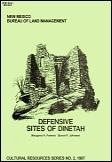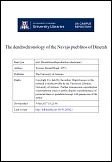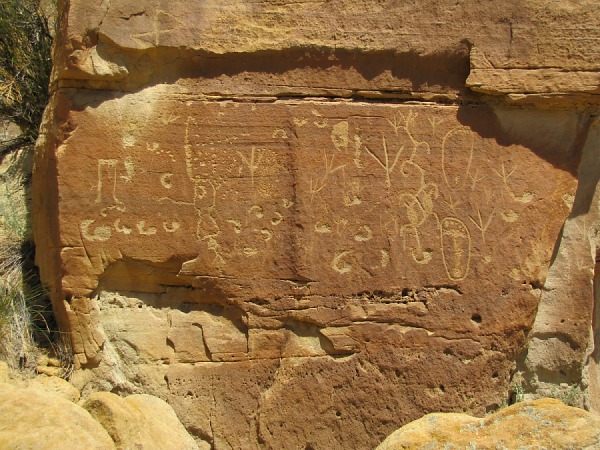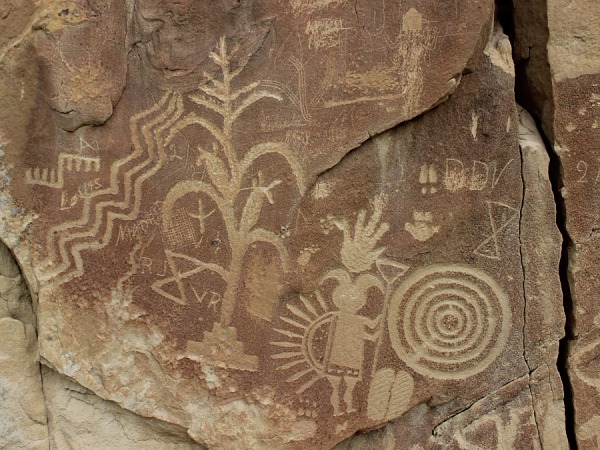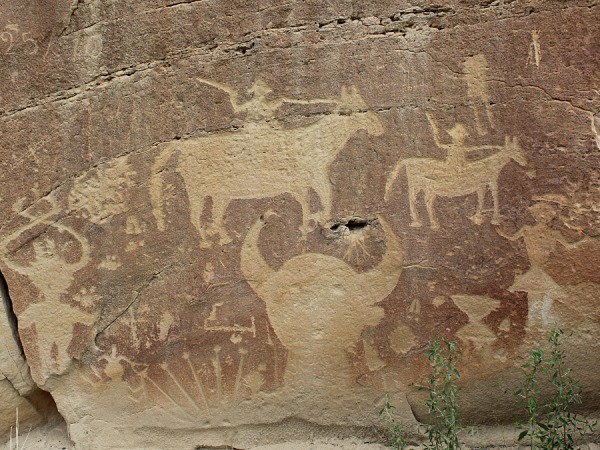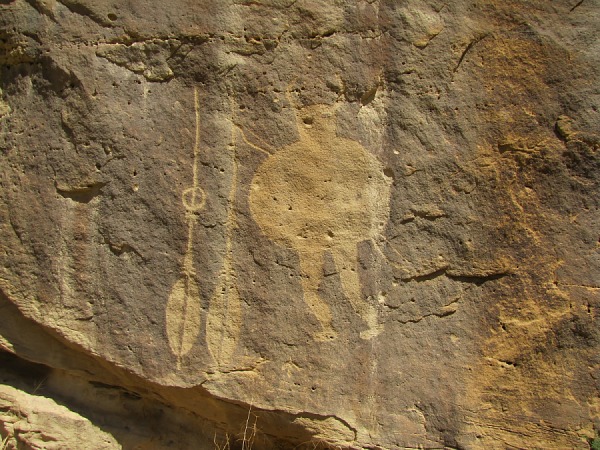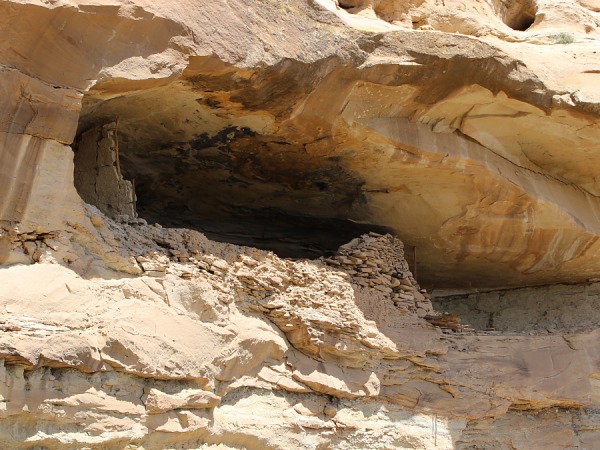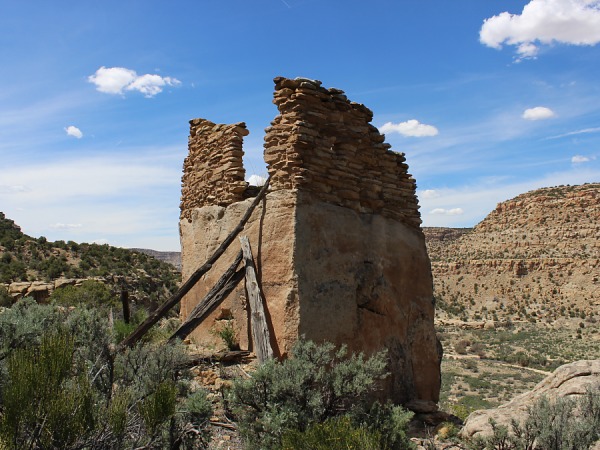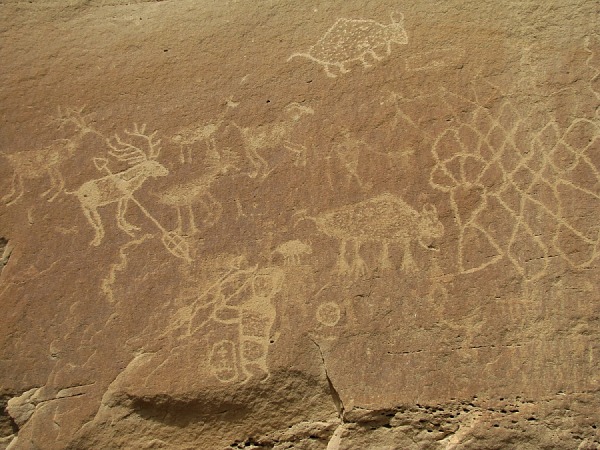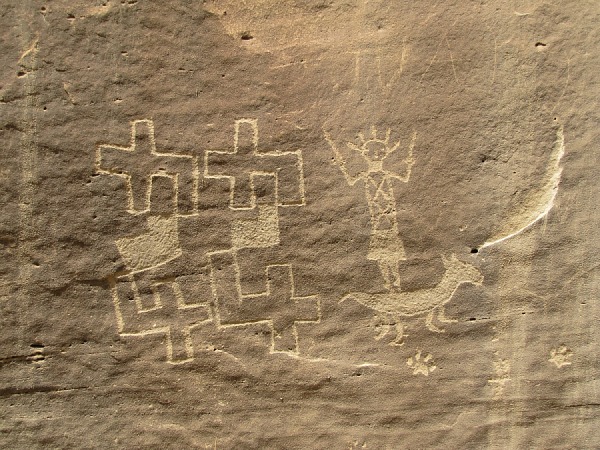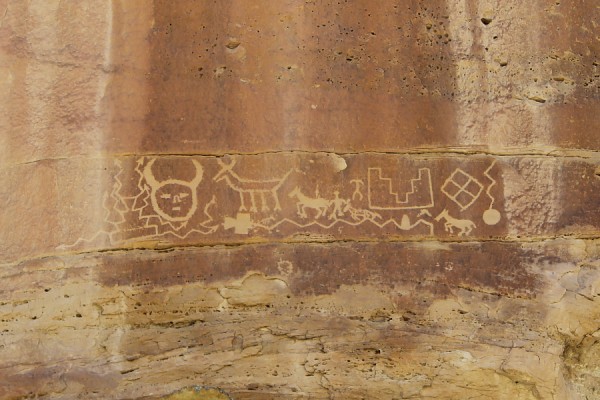Dinetah Archaeology
Crow (Cuerva) Canyon Pueblito
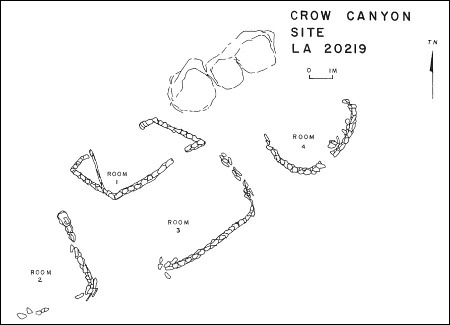
Ceramic Assemblage: The ceramics are dominated by Dinetah Gray and Gobernador Polychrome. Several sherds of Acoma Red and Jemez Black-on-white were documented in the vicinity of the hogans.
Tree-ring Analysis: Nine samples were collected from the site. Wood species included juniper and pinyon. Analysis of the tree-rings samples proved to be inconclusive in terms of construction date, at best the pueblito was in use around 1723 (Towner 1997).
Petroglyphs: The Crow Canyon Petroglyphs are the best-known collection of 16th-18th century Navajo petroglyphs (carved rock art) in the American Southwest. In addition, earlier Ancestral Puebloan images can also be found among the Navajo rock art in Crow Canyon. Hundreds of images of animals, humans, supernatural beings, and other images such as corn plants and bows and arrows can be found. Most of the images are clustered in what are referred to as "panels," on the lower cliff faces of the canyon (BLM Brochure). Shaft House Pueblito which is further up the canyon to the north. Word of caution, to reach Shaft House requires an additional 1 mile trek and hike up a talus slope with an elevation difference of almost 400 feet. Best to be in good shape, have a map or GPS file on your device, and additional water. The talus trail is sporatically marked with rock cairns.
More Information
Other Pueblitos
| ➠ Return to Archaeology Page |
Report Vandalism
Report any vandalism to the Bureau of Land Management hot line at (505) 564-7600.For in progress incidents, request a BLM Ranger through Non-Emergency Dispatch (505) 334-6622.


